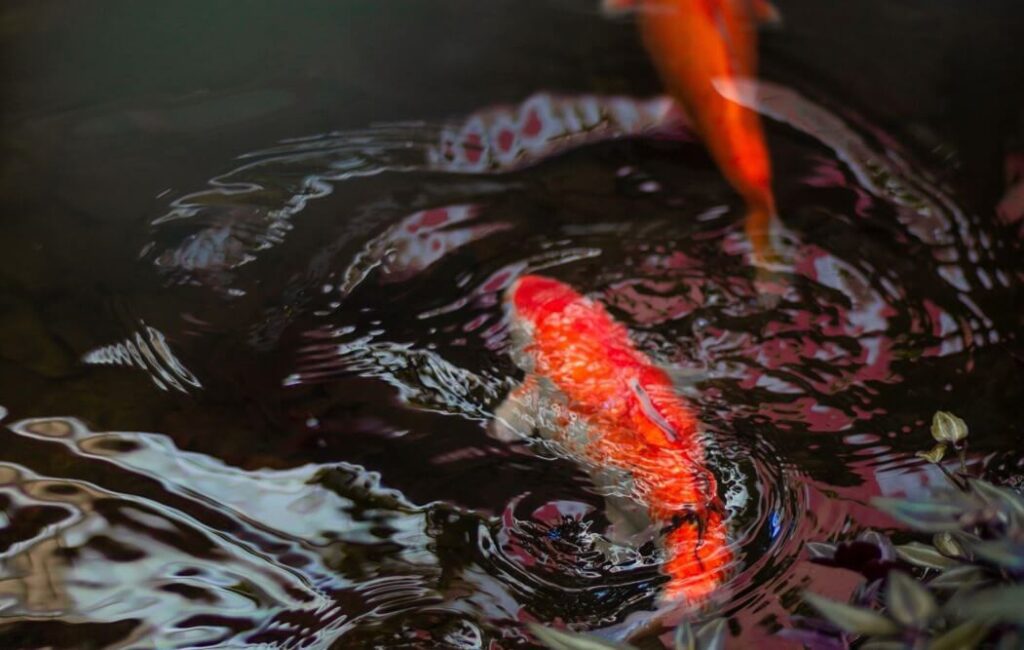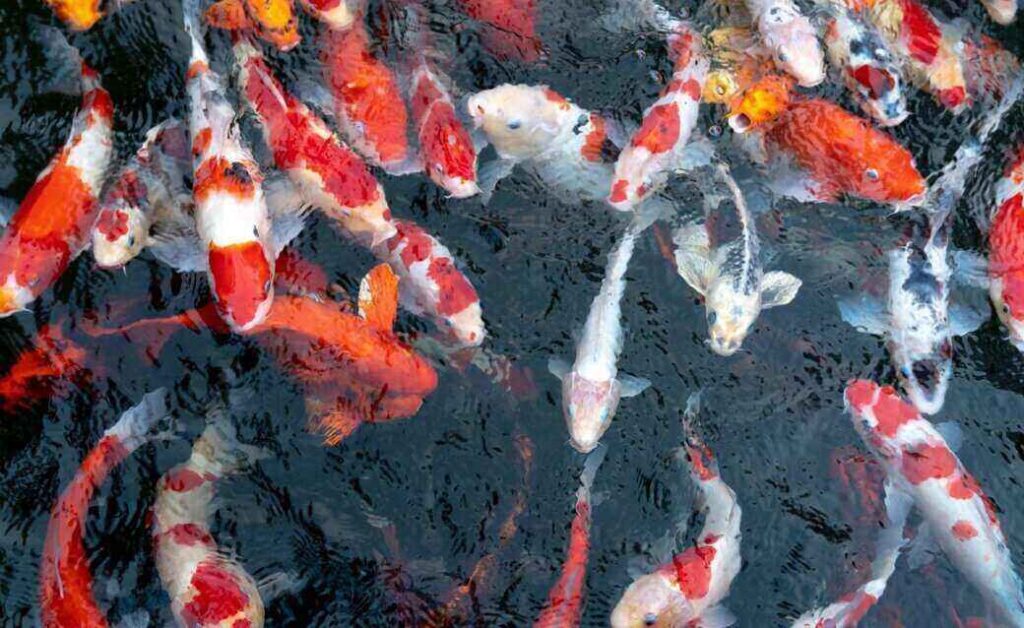A beautiful pond is inviting and may appear easy to care for, though a new pond owner needs to maintain quality water, regular cleaning, and a healthy environment for aquatic plants, koi fish, and other species in your water garden.
With a bit of practice, information, and routine maintenance, you’ll get the most enjoyment out of your fish pond. The following tips are essential for your new backyard pond, beginning from the pond installation and choosing water plants and fish to provide a balanced environment free of harmful bacteria and healthy food and nourishment.

1. Keep Debris From Your Pond and the Surrounding Area
Keeping debris and harmful items out of the pond and away from the surrounding area is crucial. When debris is combined with excess food, fish waste, and bacteria in the pond, there is a risk of developing high ammonia levels, which can be dangerous for your fish and plants.
You can easily remove decaying debris, such as sticks, stems, and other items, with a pond skimmer so that they don’t fall to the bottom, where they rot and contribute to harmful conditions in the water.
There are several tools you can use to maintain a healthy pond. If you suspect excessive debris that wasn’t collected during a routine cleaning, you can purchase an ammonia test kit to determine if the levels are normal or too high. You can purchase a kit online or from your local aquarium or pet store. When the results indicate too much ammonia, this can happen following an algae treatment.
You may also notice that your fish are jumping out of the water, which is another sign that ammonia levels have increased. You can reduce bacteria and ammonia in your pond with an automatic dosing system, which helps break down debris and harmful bacteria, which supports a continuous nitrogen cycle and beneficial microbes.
You can also use professional pond cleaning services between regular maintenance to help manage algae control and healthy water quality.
2. Maintain a Cool Temperature During the Summer
During the warmer season, keeping your pond at a cooler temperature can be challenging, which is vital to maintain dissolved oxygen, which your fish require for a healthy environment.
When your koi pond water increases above 75 degrees Fahrenheit, this can decrease the oxygen levels, which can critically impact your fish. There are helpful ways you can keep your pond cool and your fish healthy:
- Use an aerator to keep the pond water cool during extreme heat
- The surface of the pond must be shaded with aquatic plants, which produce shade and keep the temperature hospitable for your fish
- Plants or shade on the perimeters of the pond can also keep the water cooler

3. Install a Proper Filtration System
A proper filtration system and pump are essential for keeping your pond clean. Both the pump and filter should match your garden pond’s size to keep up with the capacity effectively. If the pond becomes cloudy or the filter doesn’t function correctly, it may require maintenance or pond repair. You may also require a larger filter, especially if your pond is significant in size.
There are two main types of pond filters: mechanical and biological. A mechanical filter is a skimmer that removes debris from the surface of your pond, and it’s an effective way to remove sticks, leaves, and similar items.
Biological filters break down waste with bacteria, so they become less harmful and become absorbed by aquatic plants as fertilizer. It’s essential to clean your filter regularly, according to the manufacturer’s instructions, to function correctly and keep your pond clean and aquatic life healthy.
4. Avoid Overfeeding Your Fish
When you provide too much food for your fish, there is often leftover waste, which becomes decay, and sinks to the bottom of the pond. It’s essential to choose quality food that’s high in nutrients. Fish food that floats is ideal because it allows you to monitor what’s left over and makes pond cleaning much more manageable.

5. Choose an Appropriate Balance of Aquatic Plants
The balance of plants you choose for your pond is important, as well as the placement and coverage of your fish. Adding too many plants to your pond can cause oxygen deficiencies, which can interfere with photosynthesis.
Aquatic plants should cover nearly half of the pond’s surface, providing the right balance between shade and sunlight. It’s vital to ensure that the level of plants doesn’t remove too much oxygen from the water, which the fish need to survive.
If you plan on extending your pond or changing its size, adjusting the aquatic plants to accommodate your fish is essential. When plants grow in the pond, ensure sufficient coverage to provide enough shade and maintain a cool temperature, especially during hot weather.
Final Thoughts
When you install your first fish pond, it’s important to create a healthy environment, water temperature, and clean space for your fish and plant life. There are plenty of helpful pond supplies, equipment, and monitoring devices to ensure the water levels contain enough healthy bacteria to maintain healthy, thriving aquatic plants and fish. Pond management is crucial from the beginning of the installation, and it’s essential to have all the equipment you’ll need to get started.
Before you fill the pond and select the desired fish and plants, you’ll want to get familiar with which aquatic species work best and how to care for them. Installing a pond on your property is a rewarding investment, which requires regular maintenance and commitment to own a healthy garden and fish. You can enjoy a backyard pond with flourishing aquatic life and wonderful visuals with the right planning and equipment.






